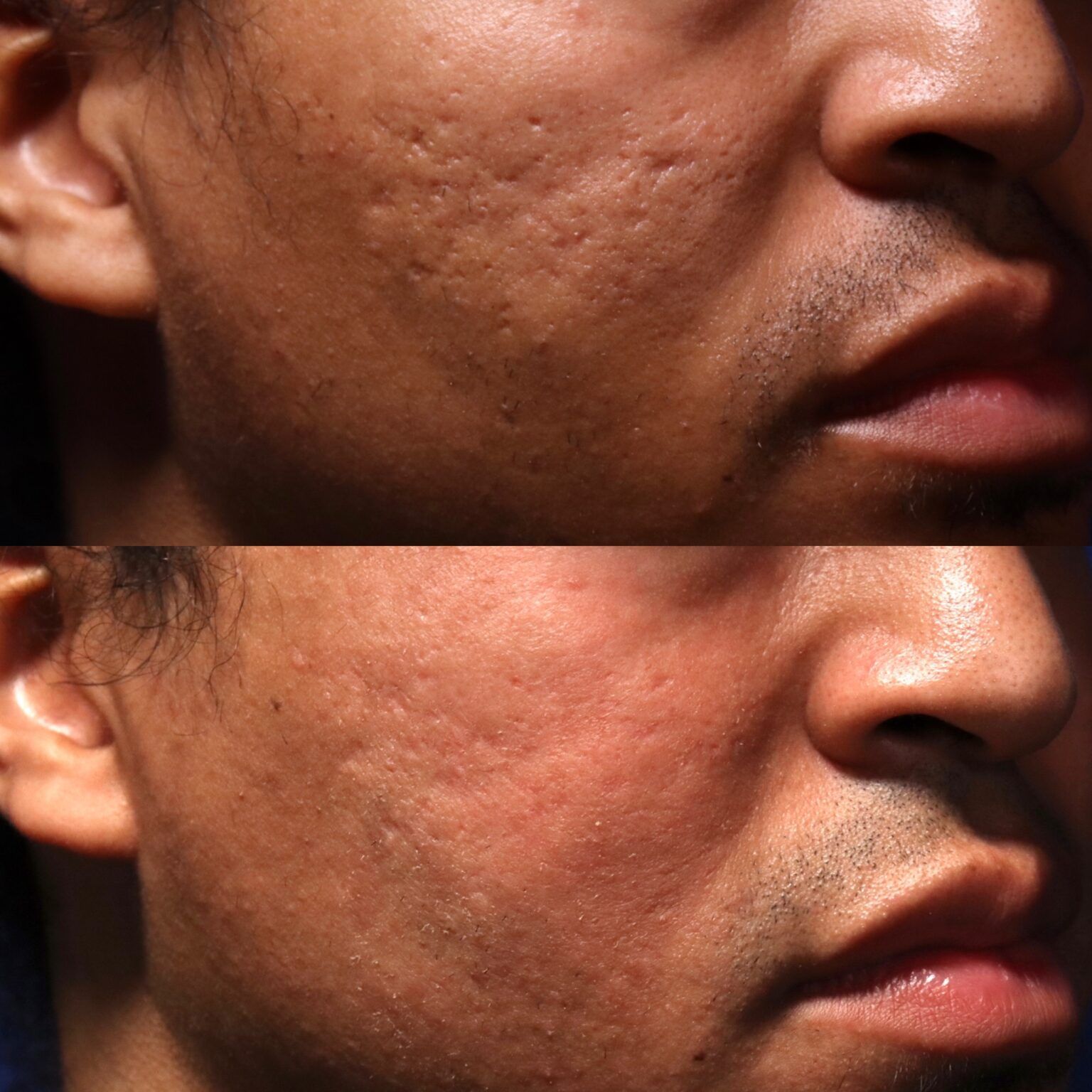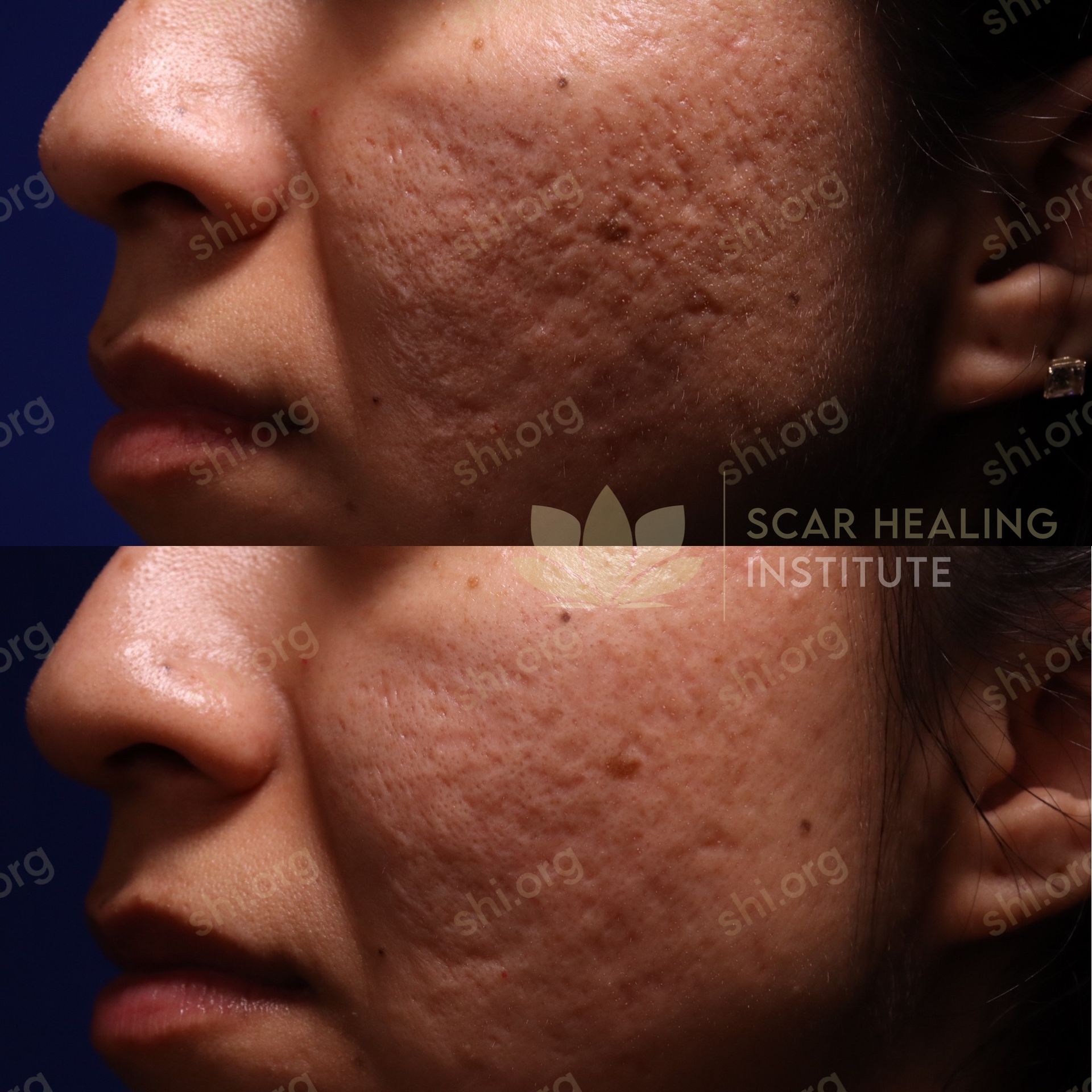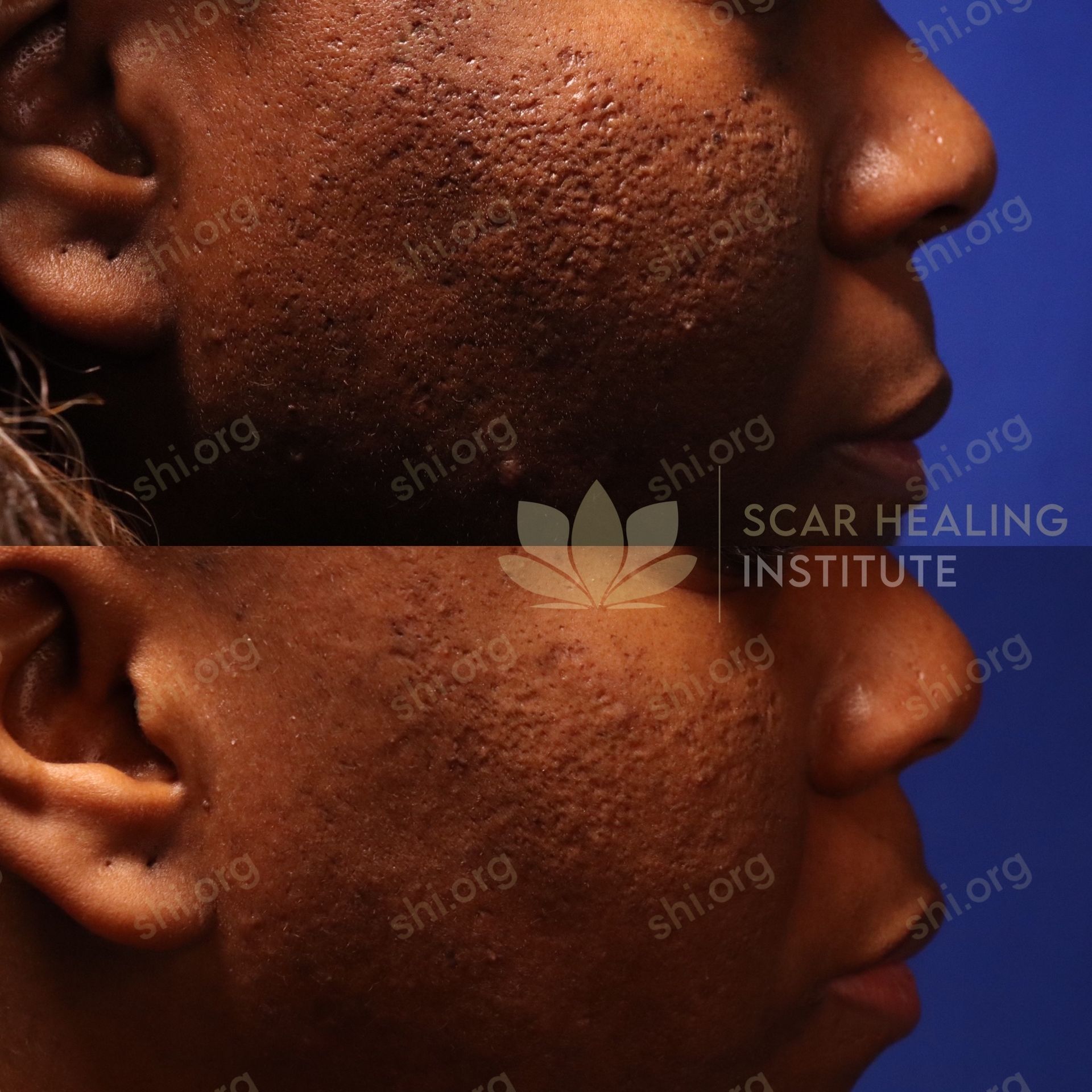TCA CROSS
Beverly Hills & Los Angeles
How Does TCA CROSS Work?
TCA CROSS stands for Trichloroacetic Acid Chemical Reconstruction of Skin Scars, a minimally invasive dermatological chemical peel specifically designed to improve the appearance of acne scars, particularly deep, narrow ones known as ice pick scars. This technique involves the careful application of highly concentrated trichloroacetic acid directly into the scars, causing a localized chemical reaction. This chemical peel promotes collagen production and skin remodeling, treating acne scars via elevation of the scarred area. By focusing TCA CROSS strictly on the scar tissue, this minimizes the risk to surrounding healthy skin, making it a targeted chemical peel treatment for those seeking significant improvements in their appearance.
What are the Benefits
of TCA CROSS?
TCA CROSS chemical peel is a highly effective treatment for certain types of acne scars, particularly deep and narrow ice pick scars and boxcar scars. Its targeted approach allows for significant improvements in texture and appearance without extensive downtime or damage to surrounding skin. Here are some key benefits of this chemical peel:
- Precision Treatment: TCA CROSS involves the application of deep chemical peels directly to the target area, minimizing exposure to surrounding healthy skin and enhancing the accuracy of the acne scar treatments.
- Collagen Induction: The chemical peel procedure leads to filling in of acne scars from within by stimulating collagen production, which is essential for rejuvenation.
- Minimal Downtime: Compared to more invasive peels, TCA CROSS generally requires minimal recovery time, allowing patients to return to normal activities after the chemical peel treatment.
- Improved Texture: Patients typically notice a smoother texture and a more even skin tone following chemical peels like TCA.
- High Efficacy: Many patients see significant improvements after just a few peel sessions, making this peels treatment an efficient option for acne scar treatment.
- Cost-Effective: The treatment is often more affordable than other scar removal technologies, such as laser therapy, especially when considering the effectiveness in targeting deeper scars.
- Long-Lasting Results: Once the desired outcome is achieved, the improvements are generally long-lasting with proper skin care and protection.
These benefits make TCA CROSS peels a compelling choice for individuals seeking one of the best chemical peels designed to treat acne scars, especially by reducing the visibility and severity.
Is this Treatment
Right for Me?

Deciding whether TCA is the right peel for your acne scars involves several considerations. This peel is particularly effective for deep, narrow scars such as ice pick scars or boxcar scars, and may not be as effective for rolling scars or widespread shallow scarring. Ideal candidates are those who are in good health, have stable skin without active acne, and possess realistic expectations about the results. Skin types and color also play a role; individuals with darker skin tones may be more prone to post-peel hyperpigmentation and should discuss potential risks with their dermatologist. It is essential to consult with a qualified dermatologist who can assess your specific scars, skin types, and medical history to determine if TCA CROSS peels are suitable for you. This personalized approach ensures that you receive the most appropriate and effective chemical peels for your skin concerns.
What Is the Recovery Time for TCA CROSS?
The recovery time for TCA CROSS chemical peels is relatively brief compared to other more invasive treatments and peels, but it varies depending on skin types, the extent of the treatment, and the concentration of TCA used. Generally, patients can expect a recovery period where the skin heals and rejuvenates over the course of several days to a few weeks. Here's what you can typically expect during the recovery timeline:
- Immediate Post-Treatment (Day 1-3): Immediately after treatment, the treated areas will likely appear red and may feel a bit swollen. Small crusts or scabs can form where the peel was applied.
- Early Healing Phase (Day 4-7): During this phase, the initial redness starts to subside, and the scabs will begin to dry out. It's crucial to avoid picking at the scabs to prevent scarring.
- Mid-Recovery Phase (Week 2): By the second week, most of the scabs have usually fallen off naturally. The skin beneath may appear pink and tender as new, healthier skin forms from the peel.
- Continued Healing (Week 3-4): The new skin continues to heal and gradually blends with the surrounding areas. Any residual pinkness will begin to fade during this time.
- Long-Term Healing (Month 2 onwards): Collagen remodeling continues for months after the chemical peel, further smoothing and improving the skin’s texture.
During recovery, it is important to follow all aftercare instructions provided by your dermatologist, including avoiding direct sun exposure and using recommended products to support healing and prevent peels complications.
How Is TCA CROSS Applied?
The TCA CROSS procedure is a meticulous chemical peel that requires precision and care by a trained dermatologist. Here's a step-by-step overview of how the treatment is typically applied:
- Preparation: The skin is cleansed to remove any oils, and an antiseptic is applied to reduce the risk of infection. The area is then dried completely to ensure the peels adheres properly.
- Application: Using a fine-tipped instrument, such as a toothpick or a small, sharp applicator, the dermatologist carefully applies a small amount of high concentration TCA directly into each scar. Precision is key to confine the peel to the scarred tissue only.
- Neutralization: Unlike some other chemical peels, TCA self-neutralizes, so no neutralizing solution is applied. The reaction stops once the desired depth is reached.
- Immediate Aftercare: The treated areas might frost or turn white, which indicates that the acid has penetrated the skin. This frost typically subsides within a few hours.
- Monitoring: The dermatologist will monitor the reaction and the treatment response, adjusting the application if necessary during subsequent sessions.
Combining TCA CROSS with Other Treatments
Combining the TCA CROSS procedure with other dermatological treatments can enhance the overall effectiveness, particularly for comprehensive acne scar treatments. Here are five treatments that are commonly combined with TCA CROSS chemical peels:
- Microneedling
- Laser Resurfacing.
- Platelet-Rich Plasma (PRP)
- Chemical Peels
- Subcision

How Many Treatment Sessions Do I Need?
The number of TCA CROSS sessions required can vary widely among patients, largely depending on the types and severity of acne scarring being treated. Most patients may need several chemical peels to achieve the best results, especially those with more pronounced scars such as deep ice pick scars. It is important to note that significant improvement is typically not seen after just a single session. Since many individuals have multiple types of scars, combining the TCA CROSS chemical peel procedure with other treatments is often recommended to address all scar variations comprehensively. By integrating modalities such as microneedling, laser resurfacing, or chemical peels, the treatments becomes more robust, catering to the diverse needs of the scarred skin. Each session is usually spaced several weeks apart to allow the skin sufficient time to heal and to let your acne scars respond to the treatment, and your dermatologist will assess progress and adjust the treatments as needed.
What to Expect

During TCA CROSS treatment, expect a brief stinging sensation as the chemical peels are applied to the acne scars. Post-treatment, the targeted areas will show redness and may swell slightly, with small scabs forming on the treated scars. These scabs will naturally shed within about a week. As your skin heals over the following weeks, you'll gradually see an improvement in the appearance of your acne scars. Full results, due to collagen remodeling, will develop over several months. Your dermatologist will provide aftercare instructions to aid healing and ensure the best outcomes, helping you understand how to care for your skin during the recovery process.
Post-Care Instructions
Proper post-care is essential after undergoing TCA CROSS as with other chemical peels to ensure the best results and minimize potential side effects. Here are key guidelines to follow:
- Avoid Sun Exposure: Protect the treated areas from the sun as UV exposure can exacerbate hyperpigmentation. Use a broad-spectrum sunscreen with at least SPF 30, and consider wearing a hat or seeking shade when outdoors to further shield your skin.
- Use Lightening Creams if Recommended: If there is a risk of hyperpigmentation from the chemical peel, or if you already have darker skin, your dermatologist may prescribe a lightening cream. Apply this as directed to help manage and prevent uneven skin tones.
- Do Not Pick at Scabs: The scabs that form over the treated scars are part of the healing process. Picking at them can lead to scarring and infection. Allow the scabs to fall off naturally to ensure the new skin underneath can heal smoothly.
- General Care: Keep the treated area clean and moisturized. Avoid using harsh products that can irritate your face. Stick to gentle, non-comedogenic products as your skin heals.
Following these instructions carefully will help manage the healing process and enhance the effectiveness of the treatment, while protecting your skin from long-term complications of chemical peel treatment.

